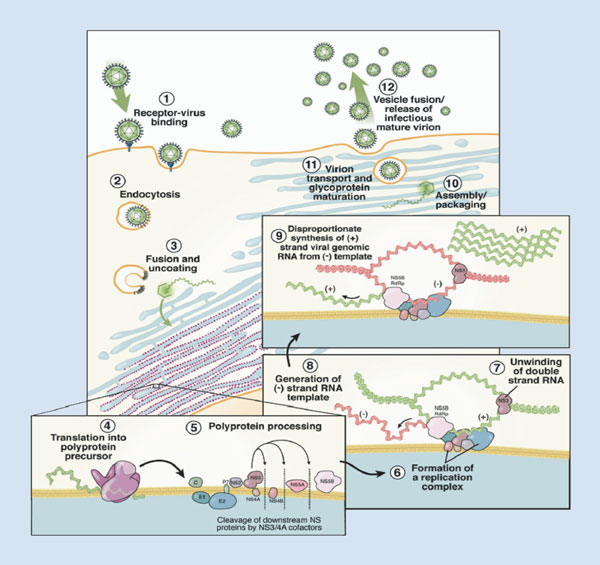
A large majority of particles is non-infectious. Particles are pleomorphic and size, buoyant density, and infectivity might differ significantly. In fact, the population of the extracellular HCV particles is heterogeneous. Viral spikes on the membrane of the virion are about 6 nm and they are formed by heterodimers of E1 and E2 glycoproteins. Analysis of viruses from plasma and from cell culture supernatant indicated that enveloped particles are icosahedral and 56-65 nm in diameter, while and the viral core is about 45 nm. HCV is a small, enveloped, positive single-stranded RNA virus that belongs to the Flaviviridae family, genus Hepacivirus. It has been postulated that the epidemic has been caused by extensive iatrogenic transmission during the era of parenteral-antischistosomal-therapy mass-treatment campaigns before 1985. The highest virus prevalence was registered in Egypt, where 22% of population is infected. Conversely, in Asian and African countries the virus prevalence is high. For example, North America, Western Europe and North and Australia’s have the lowest HCV prevalence. The difference between the infection rate in low and high endemic countries is about 20% (Figure (Figure1 1). The rate of infection and subtype prevalence are country depend. There are seven genotypes (gt 1-7) and numerous subtypes of HCV. Thus, HCV infection represents a major public health issue that should be addressed with strong policy interventions to effectively identify and treat HCV infected patients. During that period, the number of HCV-related cirrhosis cases is estimated to increase by 31% and HCC by approximately 50% with an additive effect due to the occurrence of the metabolic syndrome. In the next decade, an increase in the burden of hepatitis C is expected because of aging of the currently infected population.

Each year, about a third of liver transplantations are performed on patients with complications associated with the HCV infection, with decompensated cirrhosis or HCC. Alcohol abuse and the metabolic syndrome are the main cofactors influencing the progression to advanced liver disease and HCC. Without treatment, most of the acute infections progress to chronic ones, followed by liver disease, such as cirrhosis and HCC. Hepatitis C virus infection in the World.


 0 kommentar(er)
0 kommentar(er)
